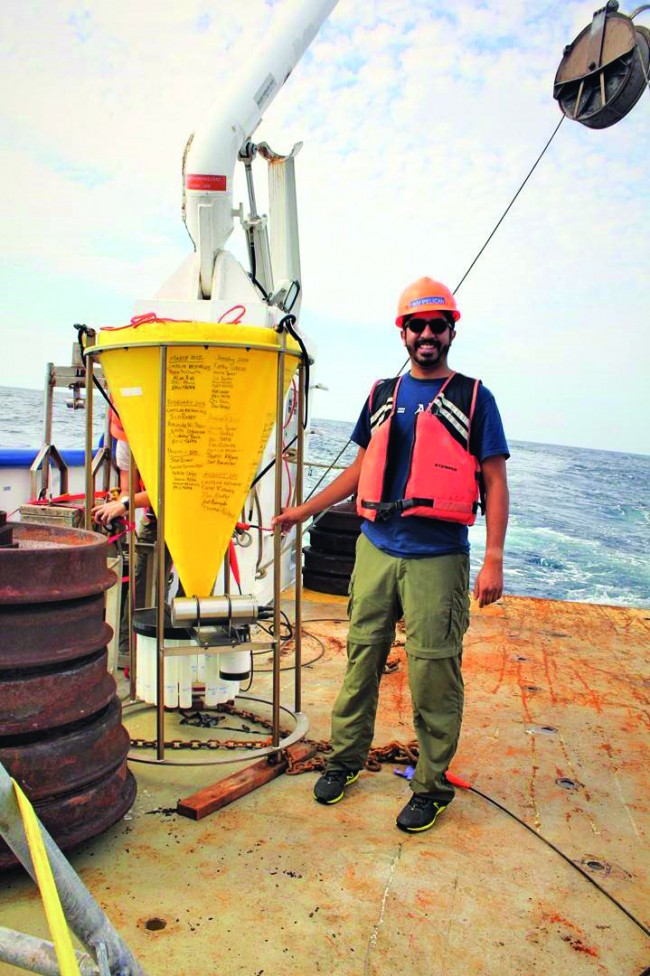Catch a Falling Sediment
October 22, 2014
Planktic foraminifer Globigerinoides ruber (G. ruber)—a single-cell organism with a hard outer shell—is perhaps one of the most widely used species for reconstructing past sea-surface conditions. Recent studies suggest two subspecies, or morphotypes, called G. ruber sensu stricto and G. ruber sensu lato live at different depths and therefore must not be mixed when reconstructing past climates.

Kaustubh Thirumalai, a Ph.D. candidate at the University of Texas at Austin’s Institute for Geophysics, said such a hypothesis was worrisome because it would mean previous reconstructions that mixed the species were potentially biased.
To test this thinking, Thirumalai led a study in the Gulf of Mexico, where scientists dropped a sediment trap about 1,100 meters underwater to intercept dead plankton shells before they hit the seafloor. Core-top and downcore samples were also retrieved for analysis.
“We show with the help of the sediment trap that there is little to no difference in habitat between these subspecies, thereby showing that previous reconstructions are not all wrong,” Thirumalai said.
The findings were published Aug. 11, 2014, in Nature’s open-access journal Scientific Reports. The study, funded in part by the Jackson School’s Martin B. Lagoe Student Research Fund for Micropaleontology, was conducted in collaboration with the U.S. Geological Survey’s St. Petersburg Division.
Back to the Newsletter